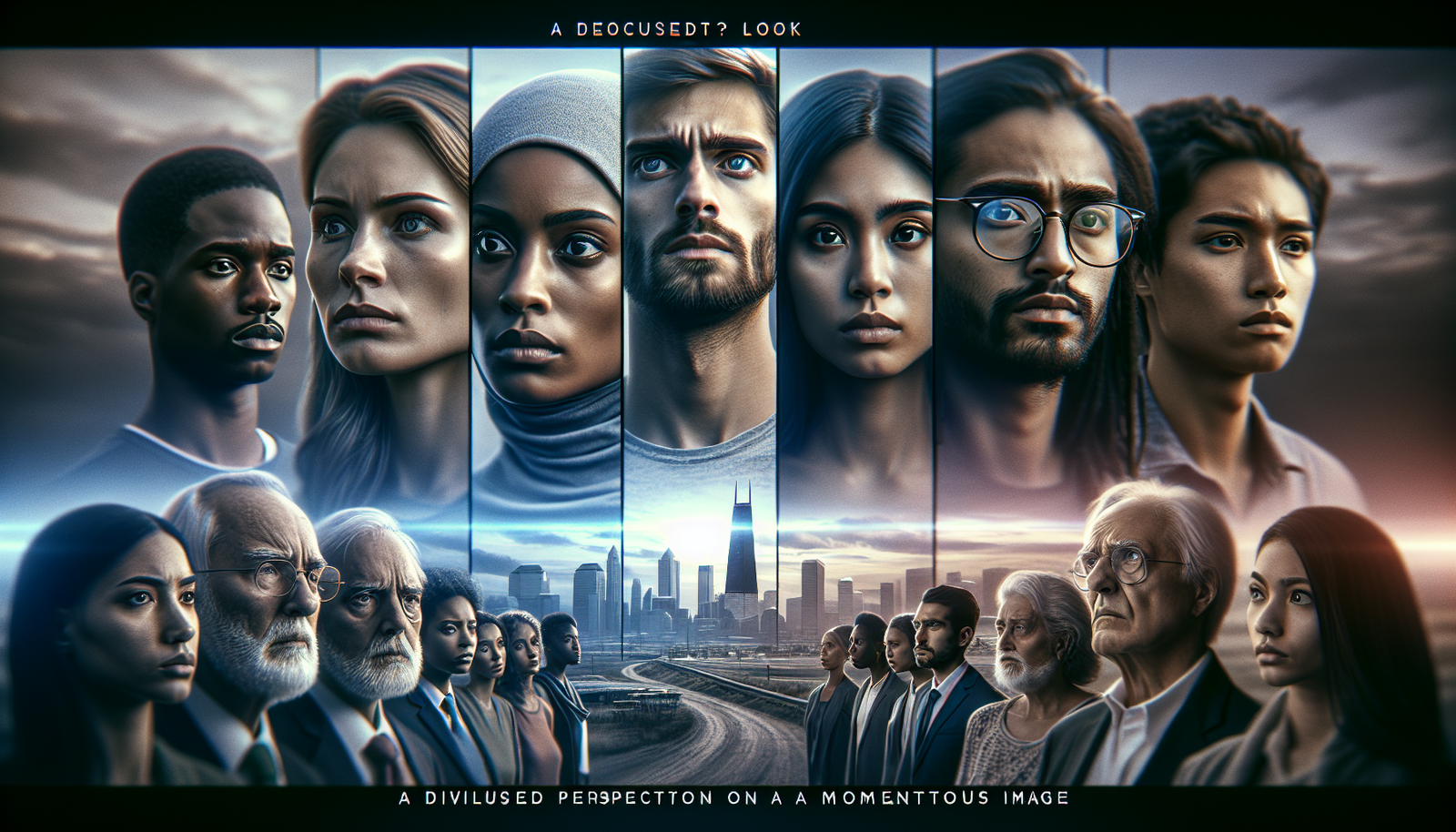The recent events in Gaza exacerbate global tensions and polarization. The image “All eyes on Rafah”, widely circulated, questions contemporary perceptions of horror. Its virality raises profound inquiries about the graphic representation of human suffering.
This visual, propelled by social media, creates a contradictory emotional reaction. Does a stylized aesthetic soothe real drama? Pulpit critics raise questions about the use of artificial intelligence in denunciation art. The duality between visibility and information reflects a major contemporary ethical dilemma.
A generated image cannot replace the pain experienced. Far from merely illustrating a conflict, this symbol evokes a sense of urgency. This duality prompts reflection on the social and political implications of this digital work.
Contextualization of the viral image
A viral visual, titled “All eyes on Rafah”, emerges following Israeli strikes that resulted in the deaths of several dozen people in Rafah, Gaza. This image, likely generated by artificial intelligence, has been shared millions of times on social media. It represents a stripped-down vision of a shelter, where rows of tents are lined up. In the center, a simple slogan in English calls for international attention to the situation of Palestinian refugees.
Reception and criticism
Despite its virality, the image sparks strong reactions. Some see it as a detached way of reporting the tragic reality unfolding in Rafah. The representation of a sterile landscape, devoid of bodies or rubble, contrasts with the brutality of recent events. This absence of representation of human suffering raises questions about the effectiveness of such an image in raising awareness of the crisis.
A symbol of the Palestinian cause
The slogan “All eyes on Rafah” has become a rallying cry, representing the struggle for the Palestinian cause. Used by both anonymous individuals and celebrities, it transcends borders and joins demonstrations in favor of Palestinian rights. Its universal and non-violent nature encourages its widespread diffusion without shocking users’ senses.
Impact on social media
Social media plays a key role in the circulation of this visual. The absence of warnings for sensitive content allows it to reach a wide audience. Many internet users, eager to express their solidarity, feel more comfortable sharing this image rather than more explicit photographs of the reality on the ground. This raises questions about the responsibility of digital platforms in regulating content and their influence on the perception of the conflict.
Controversy surrounding the use of AI
The use of artificial intelligence to create the visual is divisive. Some criticize the lack of a faithful representation of the horror experienced by the inhabitants of Gaza and highlight a potential desensitization to human suffering. AI-generated art is perceived by some as an apology for an altered reality that would ignore the tangible violence of war.
Critique of the representation of reality
The sanitized vision proposed by “All eyes on Rafah” is accused of being overly smooth. By presenting perfectly aligned tents, the image offers a simplistic view of the refugee crisis, distorting the understanding of human tragedy. This disconnect with material reality calls into question the notion of solidarity conveyed by this type of artistic representation.
Artistic alternatives
In the face of this polarization, other artists use the same slogan to disseminate visuals that more faithfully reflect the horror of the situation. These creations, entirely made by humans, provide a more authentic representation of the victims and their experiences. By prioritizing an artistic and human approach, these works seek to restore the connection between the observer and the reality of the suffering endured.
Frequently asked questions about the image “All eyes on Rafah”
What is the origin of the image “All eyes on Rafah”?
The image was published by a Malaysian photographer on Instagram in response to the Israeli strikes in Rafah, Gaza. It quickly went viral, reaching over 40 million shares.
Why has the image sparked criticism?
Criticism mainly focuses on its sanitized representation of violence, as it shows neither bodies nor destruction, indicating a detachment from the brutal reality of ongoing events.
What is the message behind the slogan “All eyes on Rafah”?
This slogan calls on the international community to focus on the situation of Palestinians in Rafah, highlighting the urgency and severity of the bombings and population displacements.
How was the image created?
It is likely that the image was generated using artificial intelligence, which raised concerns about its authenticity and its impact on the perception of the reality of the conflict.
What consequences could this image have on the perception of the war in Gaza?
This image, while eliciting broad solidarity, could also minimize the seriousness of events by softening the violence and trauma experienced by the inhabitants of Gaza.
Is the virality of the image beneficial for the Palestinian cause?
Although the image has helped raise awareness among a wide audience, it also sparks debates about how information about the conflict is disseminated and perceived, with opinions on its effectiveness being divided.
How does this image differ from traditional photographs of conflicts?
Unlike documentary photographs that often show the brutality and chaos of conflicts, this image opts for a stylized and less direct representation, which may diminish its emotional impact.
What alternative messages are commonly shared on social media in relation to this image?
Many artists and activists use the slogan “All eyes on Rafah” while creating their own art that more tangibly reflects the suffering of civilians, suggesting that raw emotion is sometimes necessary to provoke genuine action.






